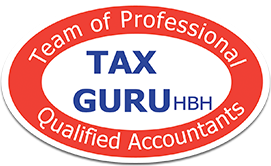Australia Business Number
Everyone who charges for goods & services must have an ABN.
Registering for GST
Businesses with an annual turnover of $75,000 or more must register for GST.
Business Activity Statements (BAS)
The BAS is the method by which businesses pay their GST commitment and lodge the information with the ATO. There are a variety of payment methods that can be chosen according to business needs. Besides your GST, the BAS can include tax instalments deducted from employees, and personal instalments for yourself or your business entity.
In order for the BAS to be submitted, it is essential for you to have a copy of the form but, if you are our regular Tax client, we can arrange for your BAS to be sent directly to us electronically by the ATO, making its completion more efficient and less stressful.
Late Lodgement of Tax Returns (BAS)
Penalties will be applied by the ATO for failure to lodge tax returns, including BAS, on time.
Firstly, the ATO will issue you a Failure to Lodge (FTL) penalty if your tax return isn’t lodged by the due date. This fine is calculated at the rate of one penalty unit for each period of 28 days or part thereof that the document is overdue, up to a maximum of dire penalty units. The value of a penalty unit is currently $210, which makes the maximum penalty which can be applied for an individual – $1050.
Pay As You Go (PAYG)
There are two types of PAYG. These are:
- PAYG Instalment System (PAYGI) – used for paying tax on business and/or investment income. It only applies to you if you earn business and/or investment income over a certain amount. If you pay using PAYG instalments, you still need to lodge an annual tax return.
- PAYG Withholding System (PAYGWH) – used for paying amounts that are withheld from employee salaries or wages.
Tax Deductions
When a business is registered for GST, it must be remembered to claim the net amount of the expenses after GST has been deducted. A tax credit has already been received on the GST amount.
Refund of GST – Input Tax Credits
An Input Tax Credit (Refund of GST) can only be claimed for genuine business expenses. Items purchased primarily for private use such as a family car, computers, holiday accommodation etc. cannot be claimed.
Where an item may have a dual use i.e. both private and business, then it is claimed in proportion to the business usage as determined by a logbook.
GST & Hire Purchase / Leasing
When a hire purchase / leasing contract is established for the purchase of a motor vehicle or item of plant & equipment you are only entitled to a refund of GST on your monthly repayments. However, when financing through a personal loan you become entitled to the total GST paid in the next BAS period.
Motor Vehicle Purchase & GST Input Tax Credits
Input tax credits on motor vehicles purchased for business purposes are claimed to the extent they are used for business as determined by a logbook.
Commercial vehicles used solely for work purposes i.e. utes, vans, trucks etc, are claimable.
Luxury vehicles, costing over $67,525 are claimable to the amount of $67,525. Stamp duty on the transfer does not carry GST.
Sale of Assets
When a sale of an asset occurs (e.g. motor vehicle, plant & equipment etc) in a GST-registered business, the sale is considered a taxable supply requiring a tax invoice to be provided to the purchaser.
The sale is included in the following BAS Statement in full, even though it may have been used only partly for the business.
Interest Deductions After The Business Ceases
Where a loan continues to exist after the cessation of a business, it is possible to claim the interest on the loan in future years even if the loan has been renegotiated. This is also the case when an income-producing asset is sold realising less than the outstanding loan balance.
NOTE – 2015/2016 Budget – Accelerated Depreciation for Small Business. The government will significantly expand accelerated depreciation for small businesses with aggregated turnover of less than 2 Million by allowing them to immediately deduct assets they start to use, or install, ready for use, provided the assets are less than $20.000. This will apply for assets acquired and installed, ready for use from 12/05/2015 to 28/01/2019. For assets $20,000 – $25,000 for the period 29/01/2019 to 2/04/2019. For assets less than $30,000 for the period 3/04/2019 to 30/06/2020.


